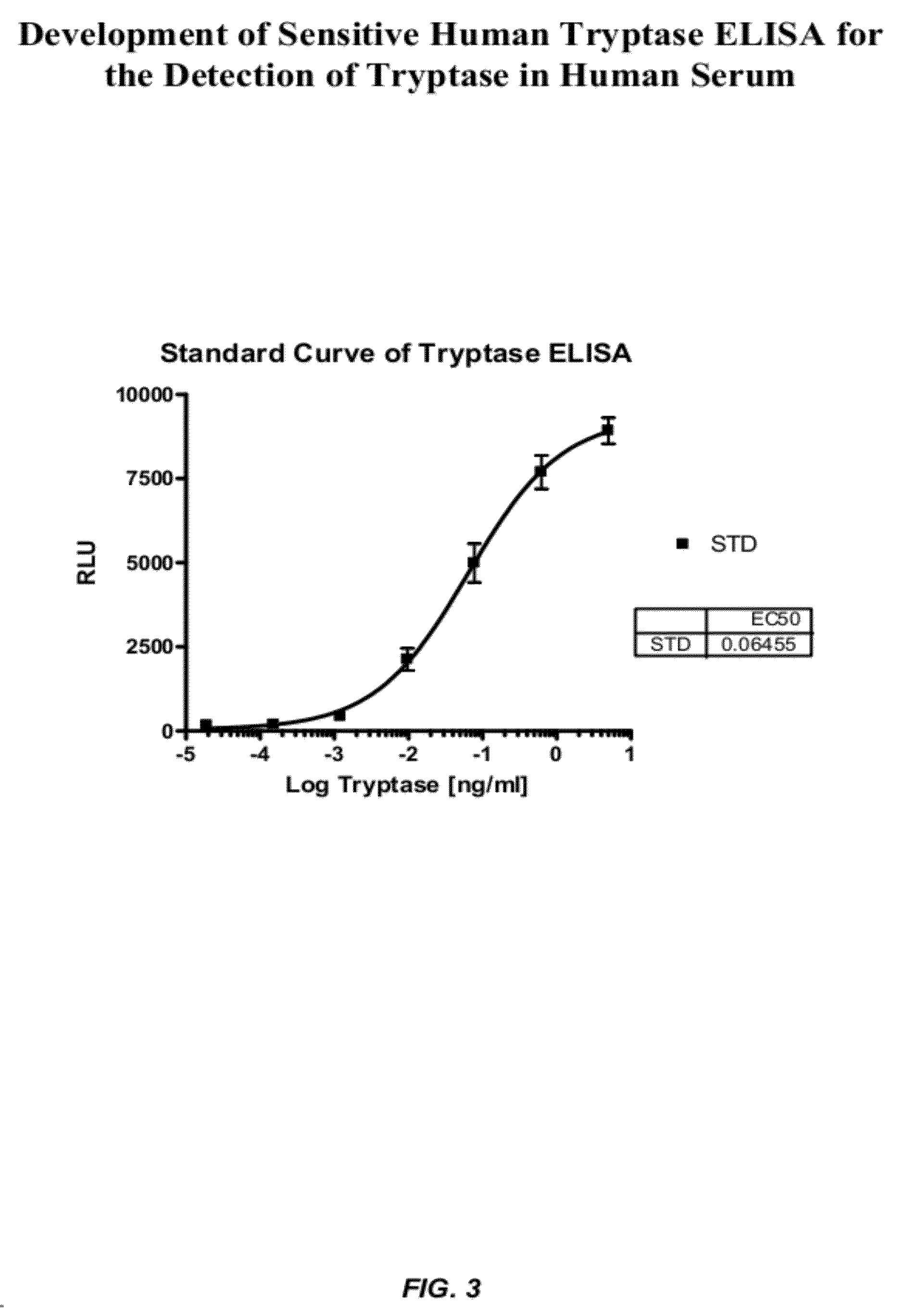Methods for diagnosing irritable bowel syndrome
- Summary
- Abstract
- Description
- Claims
- Application Information
AI Technical Summary
Benefits of technology
Problems solved by technology
Method used
Image
Examples
example 1
A Tryptase ELISA for Predicting IBS
[0512]This example describes a sensitive ELISA for detecting the presence or level of mast cell β-tryptase. See also, FIGS. 1-7.
[0513]Background: Mast cells play an important role in the pathogenesis of irritable bowel syndrome (IBS). Increased mast cell infiltration and activation in distal gut segments are associated with symptom onset and severity of IBS. Mast cells have been implicated in the elevated response of visceral afferent nerves to mucosal stimulus in IBS patients. Measurement of mast cell markers can have important implication in clinical diagnosis of IBS. However this effort was hindered due to lack of sensitive assays.
[0514]Methods: Here we report the development and validation of a highly sensitive two-side ELISA assay to measure tryptase level in human serum samples (detection limit 0.019 ng / ml). The assay is precise, robust, and reproducible. Serum tryptase concentration in healthy controls and IBS patients was measured using thi...
example 2
Evaluation of the Diagnostic Utility of Serum Tryptase Levels in IBS
[0518]Background: Mast cells play an important role in the pathogenesis of irritable bowel syndrome (IBS). Increased mast cell infiltration and activation in distal gut segments are associated with symptom onset and severity of IBS. Mast cells have been implicated in the elevated response of visceral afferent nerves to mucosal stimulus in IBS patients. Measurement of mast cell markers can have important implications in clinical diagnosis of IBS. However, this effort was hindered due to lack of sensitive assays.
[0519]Methods: Here we report the development and validation of a highly sensitive two-site ELISA assay to measure tryptase level in human serum samples (detection limit 0.019 ng / ml). The assay is precise, robust, and reproducible. Serum tryptase concentrations in healthy controls and IBS patients was measured using this assay.
[0520]Results: The average serum tryptase level in healthy controls was 7.1+2.5 ng / m...
example 3
Questionnaire for Identifying the Presence or Severity of Symptoms Associated with IBS
[0526]This example illustrates a questionnaire that is useful for identifying the presence or severity of one or more IBS-related symptoms in an individual. The questionnaire can be completed by the individual at the clinic or physician's office, or can be brought home and submitted when the individual returns to the clinic or physician's office, e.g., to have his or her blood drawn.
[0527]In some embodiments, the questionnaire comprises a first section containing a set of questions asking the individual to provide answers regarding the presence or severity of one or more symptoms associated with IBS. The questionnaire generally includes questions directed to identifying the presence, severity, frequency, and / or duration of IBS-related symptoms such as chest pain, chest discomfort, heartburn, uncomfortable fullness after having a regular-sized meal, inability to finish a regular-sized meal, abdomina...
PUM
| Property | Measurement | Unit |
|---|---|---|
| Current | aaaaa | aaaaa |
| Concentration | aaaaa | aaaaa |
| Level | aaaaa | aaaaa |
Abstract
Description
Claims
Application Information
 Login to View More
Login to View More - R&D
- Intellectual Property
- Life Sciences
- Materials
- Tech Scout
- Unparalleled Data Quality
- Higher Quality Content
- 60% Fewer Hallucinations
Browse by: Latest US Patents, China's latest patents, Technical Efficacy Thesaurus, Application Domain, Technology Topic, Popular Technical Reports.
© 2025 PatSnap. All rights reserved.Legal|Privacy policy|Modern Slavery Act Transparency Statement|Sitemap|About US| Contact US: help@patsnap.com



